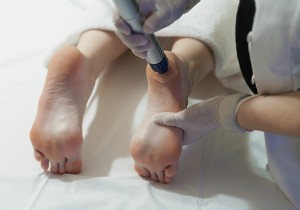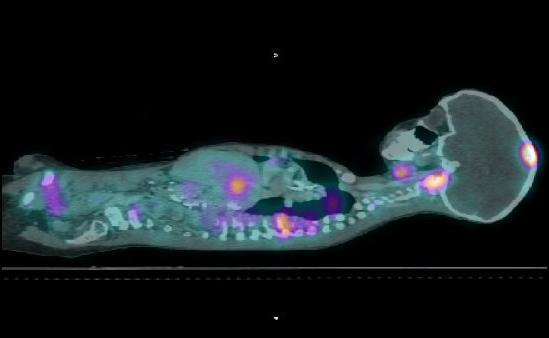
The finding is based on a short-term study involving just 65 patients, the researchers noted.
“While the long-term outcome studies are in progress, the results we have seen to date are very promising,” said study lead author Dr. Rahul Razdan, an interventional radiologist with Advanced Medical Imaging in Lincoln, Nebraska.
The American Orthopaedic Foot and Ankle Society describes plantar fasciitis as essentially an “overuse injury” resulting from inflammation of a band of tissue in the sole of the foot that links the heel bone to the base of the toes.
According to Razdan, standard treatment includes painkillers, cortisone shots, icing, heating, massage, silicone arch supports, and physical therapy centered on the benefits of controlled stretching. For some patients, invasive surgery is another option.
Dr. Raymond Monto is an orthopedic surgeon at Nantucket Cottage Hospital in Nantucket, Massachusetts. He said that about 85 percent of patients will recover from plantar fasciitis with sufficient rest and standard treatment. However, the remaining 15 percent are so-called “problem patients” for whom typical treatments fail to provide relief.
“So when you’re looking at chronic cases of disabling morning pain lasting three or four months or more, then absolutely it is warranted to explore new treatment options,” said Monto, “because the treatments we currently have are just not that great for these kind of stubborn cases.”
Razdan said the new ultrasound therapy is an entirely “novel approach” that uses ultrasonic energy to cut and remove damaged, pain-generating tissue while sparing healthy foot tissue.
In the study, Razdan’s team tested the procedure on 65 patients who sought care at an interventional radiology clinic in 2013 and 2014.
All had chronic plantar fasciitis, and all had failed to respond to standard treatments.
During the ultrasound therapy, doctors guided a hollow needle tip into an area of “problem” tissue by means of ultrasound guidance. Once in position, the tip targeted a combination of high frequency/low amplitude sound to the damaged foot region. That broke up the pain-generating tissue, which was then extracted out of the foot.
In total, average treatment time was about a minute and a half, and sedation was not used.
According to the study, by two weeks after treatment, patients showed more than a 90 percent improvement (on average) in their foot disability assessments, compared with their pre-treatment status.
These improvements appeared to persist for at least six months out, with no notable complications, Razdan said.
“It’s premature at six months to know if these kinds of early results can be sustained for longer periods of time,” said Monto, who was not involved in the new research. “Still, it’s a fascinating approach and certainly worth looking at further,” he said.
However, Dr. Howard Luks, chief of sports medicine at Westchester Medical Center and New York Medical College in Valhalla, N.Y., said the idea isn’t all that new. He said the idea of using ultrasound to address plantar fasciitis has been kicking around for the better part of a decade–with mixed results.
“We do need more treatment options, and it would be nice to have a procedure to offer that’s not invasive for patients who fail typical conservative measures,” Luks said. “Surgery is never a great option when your foot’s involved.
“But this idea,” Luks added, “has been on the radar for a while.”
At a certain point it seemed to be coming into favor, and some offices even bought equipment to be able to offer it to patients. But then it fell out of favor, as some studies showed that it had moderate benefit, while others showed it had no benefit whatsoever.
“So I would say that there could potentially always be a renewed role for this, if it’s clearly deemed to be efficacious,” he said. “But it’s certainly not new. And I would never bet the farm on any one study.”
Razdan and his colleagues are slated to present their findings on Sunday at the annual meeting of the Society of Interventional Radiology in Atlanta. Experts note that findings presented at medical meetings are typically considered preliminary until published in a peer-reviewed journal.
 /a>
/a>
 /a>
/a>
 /a>
/a>